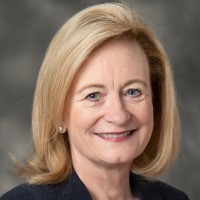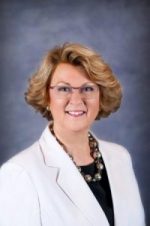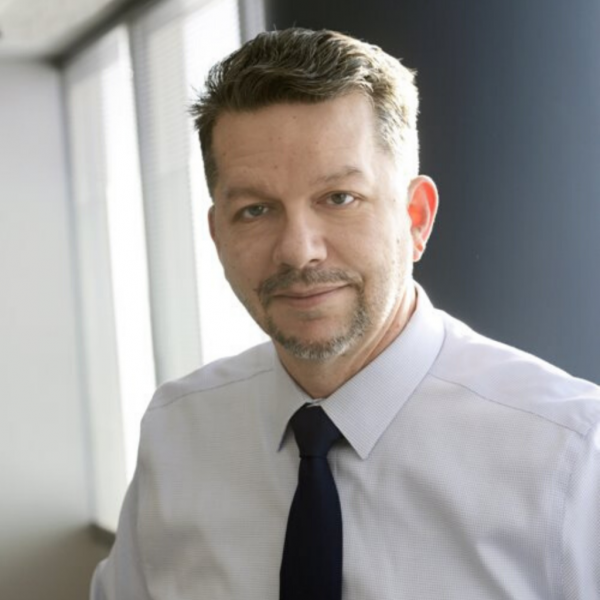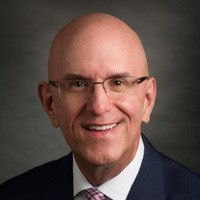Six Strategies for Success in the New Reality

The economic and social challenges of this pandemic have cast a harsh spotlight on leadership. If you are sitting in the corner office, you have a unique opportunity to prove that you belong in that big chair. Although there is no playbook for this crisis, there are attitudes and behaviors that support the heavy lifting required to motivate your team and advance your mission in the face of extreme disruption.
Several years ago, we realized Industry 4.0, or the intersection of the digital and material worlds, would be a proving ground for leadership, and .orgSource began exploring the future of associations through that lens. This research resulted in our Association 4.0 books. Positioning for Success in an Era of Disruption, outlines how 23 CEOs are growing and changing their organizations to meet an uncertain future. The companion book, An Entrepreneurial Approach to Risk, Courage, and Transformation, investigates this question from the perspective of business leaders in our community’s for-profit sector.
Although our contributors each faced unique challenges, the attitudes and behaviors that motivate them are similar. We identified six characteristics that collectively represent the adaptive leadership style needed to thrive in the midst of uncertainty. (Watch Kevin Ordonez’s webinar on this topic here.)
1. Changing Before Change Becomes Necessary
Foresight is the planning that anticipates change. Boarding up for the hurricane is not good enough. You need to forecast the storm, move to safety, and have a coping strategy for the time away from home. H. Stephen Lieber, former President and CEO of the Health Information and Management Systems Society, doesn’t just scan the horizon, he builds the future.

Since day one as CEO of HIMSS, Lieber embraced change. His vision grew HIMSS out of its traditional roots and into one of the nonprofit industry’s most forward-looking organizations. Lieber shifted the association’s focus away from membership and toward reaching, influencing and serving as many people as possible. He believes, “This is one of the fundamental changes associations need to go through. Associations need to move away from limiting terminology that causes people to work in an old model and old way of thinking.” During his tenure, Lieber spearheaded the acquisition of 10 new organizations under the HIMSS umbrella.
2. Being Curious
In the digital marketplace, invention moves at warp speed. To keep pace, leaders need to be curious people who never settle for a superficial solution. They must ask the right questions and identify challenges before they become problems.

In 2008, when Dawn Sweeney was CEO of the National Restaurant Association, The Great Recession hit the United States economy. Although membership grew as restaurant owners searched for coping strategies, Sweeney’s conversations with constituents revealed that to support her community through the downturn, the organization had to become even more responsive. Despite a contracting economy, NRA would need to grow its programs and services. Building on a firm base of existing initiatives, the association launched a health insurance offering customized to restaurant employees, expanded its food safety programs, supported advanced credit card processing, grew the industry trade show, and engaged more actively in advocacy. The industry and the association emerged from the recession stronger than ever and have continued to thrive
3. Investing in Talent

Even in the age of robotics, innovation depends on human ingenuity. When we interviewed M. Bernadette Patton, former President and CEO of the Human Resources Management Association of Chicago, she emphasized the value of developing top talent. She explained her thinking like this: “We have to figure out how to be nimble. HR impacts the ability of a company to expand and change. . .Organizations are realizing that people are the only asset that doesn’t depreciate.”
Smart CEOs remove barriers to getting the right employees in the right seats by including remote and contract workers in their organizations. They use freelancers to expand the talent pool. For organizations seeking to recruit millennials, creating on-demand project work in blended, cross-functional teams is another effective strategy to attract this demographic
4. Placing Organizational Success Over Individual Agendas
When the focus is where it should be—on the customer, there is no room for pet projects or personal politics. Success can be limited, at best, if the board and staff are not in alignment. Creating the correct balance of power is a two-way street. The CEO must set clear guidelines and expectations for the board, and the board must empower staff leaders with authority over operations.

When Abe Eshkenazi took the CEO spot at the American Production and Inventory Control Society (APICS), he was faced with a difficult situation. A lack of trust had eroded communication between the board and staff so greatly that even financial decisions were being negatively impacted. “I knew that if I didn’t fix the relationship issues, there was no future,” he says.
Eshkenazi realized that change could not occur without a culture of trust and accountability. Confidence in his guidance was established by quickly addressing several priorities. A move from Alexandria, Virginia to Chicago provided an opportunity to do necessary staff restructuring. In 2007, one year after Eshkenazi became CEO, the most controversial and complex change took place. To streamline governance, the organization’s 14 regions were restructured into nine districts. This move reduced the number of geographically based representatives on the board and paved the way for additional changes.
The new direction improved the board’s ability to govern, brought better communication with the staff, and prepared the organization to respond aggressively when a recession hit in 2008. Having learned to successfully collaborate, the team was able to grow APICS quickly after the economy began expanding again.
5. Courageously Adopting to New Ideas

A digital transformation involves adapting to new cultural norms in addition to new software. Bill Bruce began his employment as Executive Director at the American College of Occupational and Environmental Medicine knowing that technology would be front and center on his agenda. Refreshing tired systems had not been a high priority, and most of ACOEM’s software and hardware was begging for an update.
Anyone who has participated in introducing an AMS, LMS, or website platform has experienced the growing pains involved. Processes and procedures that worked for the old equipment must be revised to ensure that updated systems are managed effectively. Helping the board and staff to jump this hurdle was a priority for Bruce. He is a firm believer in the concept that IT must be in everyone’s wheelhouse. “I try to be very clear that no one is exempt from learning and mastering new skills,” he advises.
Bruce understands that technology is never the goal in itself. It is a means for organizations to aim higher and reach further. He immediately put ACOEM’s new systems to work helping members better articulate their professional value. He notes, “There’s a tremendous opportunity for occupational medicine to become more visible in the healthcare community.”
6. Communicating Vision Throughout the Organization
Vision gives leaders the courage to stay on track when the journey is challenging and the enthusiasm to take others along with them. The Society of Critical Care Medicine has a long history of responding to emergencies of all kinds, including natural disasters, wars, and terrorist attacks. As CEO and Executive Vice President, David Martin’s vision is that his organization will operate as seamlessly as the healthcare professionals it represents.

Early on, Martin introduced routine training drills and scenarios outlining how the organization would respond in a disaster. This groundwork paid off when Hurricane Katrina made it impossible for SCCM to hold its 2006 annual meeting in New Orleans. Staff implemented an emergency response plan, and the event took place at an alternative destination with few challenges.
Long before remote work became commonplace, SCCM was already testing virtual office operations. In 2009, during the onset of the swine flu (H1N1) pandemic, SCCM prepared for the possibility that its headquarters operations could be impacted if the disease took root in Chicago. The association developed a remote operations plan to accommodate the need for both a short-term and longer-term headquarters absence while still providing its full range of member services.
Martin’s vision is both innovative and expansive. “At SCCM, we have ventured into new areas such as quality improvement collaborations, basic research initiatives, data registries, and others. They are all new and developing, but hold the promise that associations can do more than just their traditional activities.”
Like September 11, 2001, COVID-19 is an event that will create lasting change. Use these six strategies to position your association for success in a new reality and instill your team with the confidence that you are the right leader to guide them toward resilience.
Read the complete profiles of Stephen Lieber, Dawn Sweeney, Bernadette Patton, Abe Eshkenazi, Bill Bruce, and David Martin.

